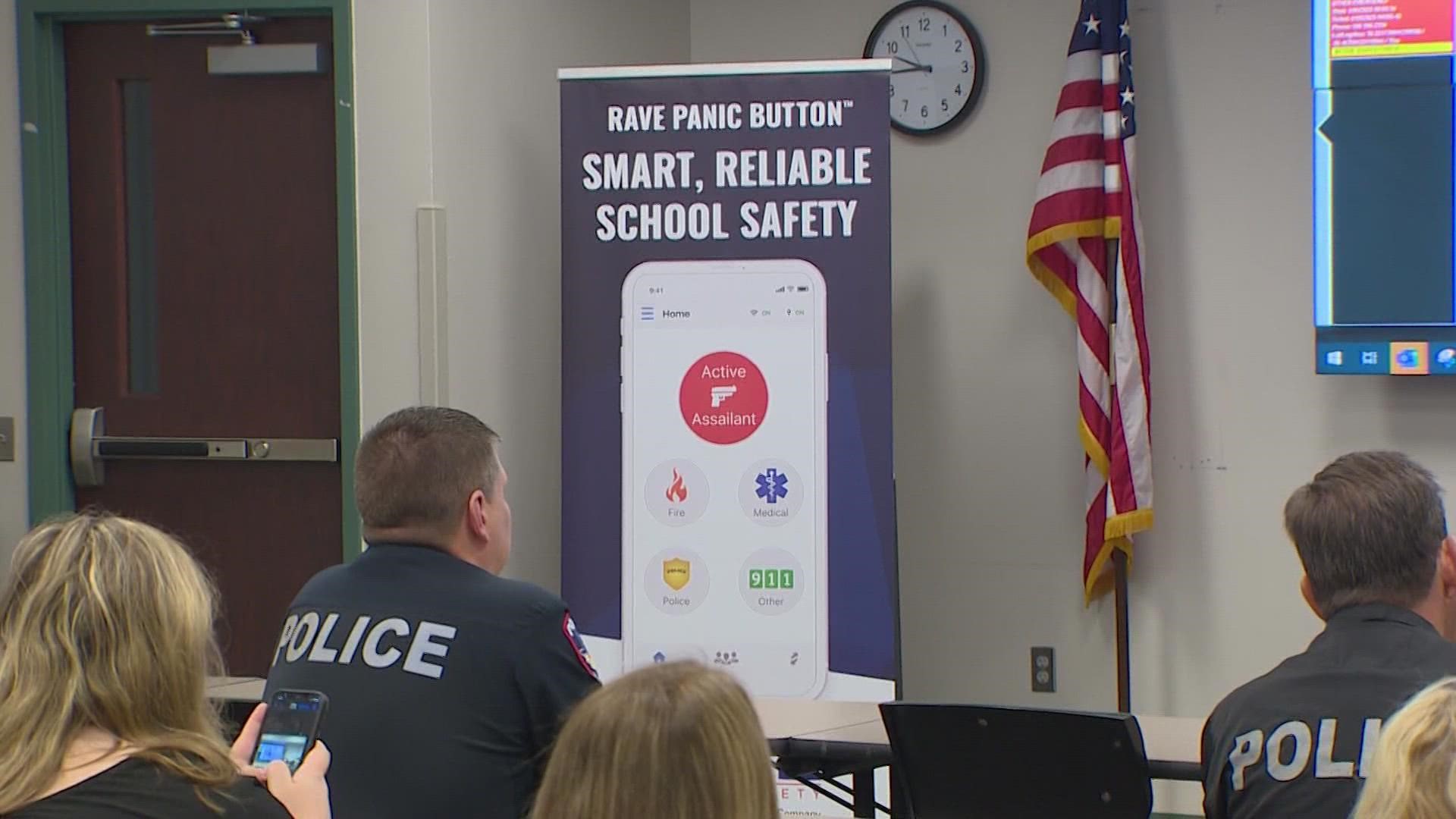MONTGOMERY COUNTY, Texas — The push to keep students safe at school continues as more and more districts are starting to use panic button technology.
The Texas Education Agency is proposing all Texas schools implement such technology, but critics say the money for these services could be used better.
On Thursday, Montgomery County unveiled a new phone application for all six of their school districts accounting for 130 schools in the area. They hope to use the app in emergency situations.
The district has signed a 3-year contract with Rave Mobile Safety for the service.
"When you press that button, you will connect to 911," said Todd Miller, the senior vice president for Rave Mobile Safety.
Once the panic button is pressed, it will send an alert to everyone on the campus who has the app on their phone.
"Not only calls 911 but it also notifies everyone else on campus. The other thing is it notifies all of our 911 centers at the same time," said Chip VanSteenberg, the executive director of the Montgomery County Emergency Communication District.
The TEA has proposed this kind of panic alert technology be implemented at all Texas schools as a part of new safety rules. One month after the Uvalde shooting, Governor Greg Abbott, Lt. Governor Dan Patrick, Speaker Dade Phelan, Senate Finance Committee Chair Joan Huffman and House Appropriations Chair Dr. Greg Bonnen allocated a $17.1 million grant for the technology.
That money is just a drop in the bucket. If TEA were to divide it equally between all the districts in the state, it would end up at around $14,250 per district.
The panic button system Montgomery County is using costs around $170,000 a year for just six districts.
Some national security experts don't think that money could be spent better.
"We are seeing a skewed focus on security hardware products and technology and less time on the training and people," said Ken Trump, the president of National School Safety Security Services. "We will not be able to solve the people's problem with the technology."
A similar panic system was in place in Uvalde when the shooting took place. An employee triggered an internal alarm system, prompting the campus to go into lockdown.
"It did work to a certain degree it warned people and law enforcement there was an intruder," said state Senator Roland Gutierrez.
Gutierrez, who represents the Uvalde area, said these silent panic alert technologies are just a band-aid to the real problem.
"There are remedies on both sides of the aisle but they are not really addressing the real core of the problem, which is we are putting assault rifles in the hands of 18 year old’s," said Gutierrez.
The TEA is still working on various other proposed safety rules, including having 6-foot fencing around schools. This won't be finalized until likely mid-2023.
You can see what else the TEA is working on through their website.

